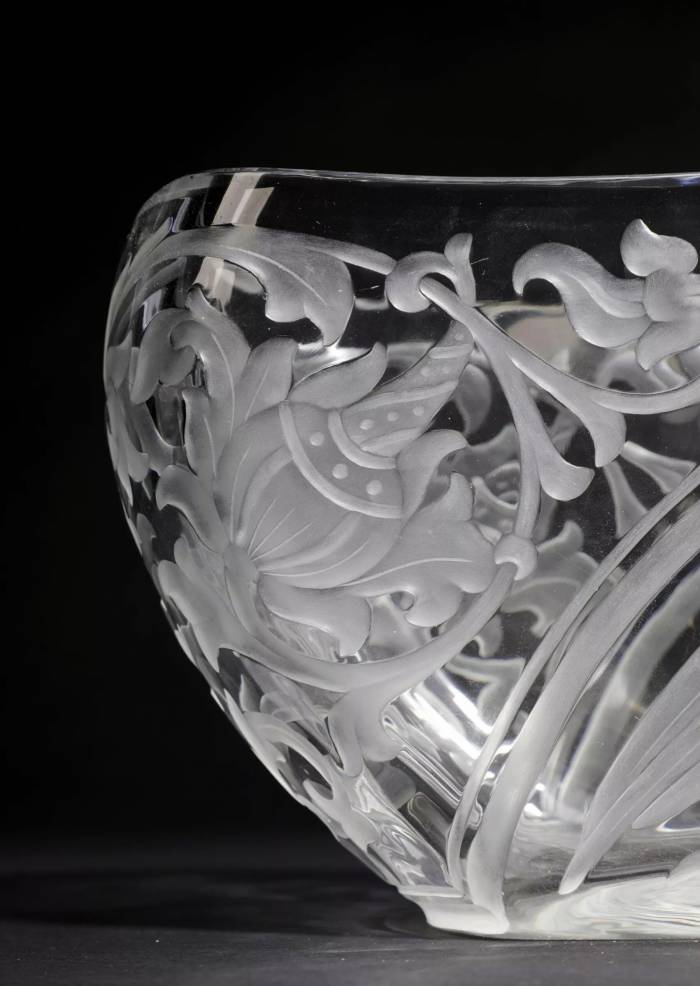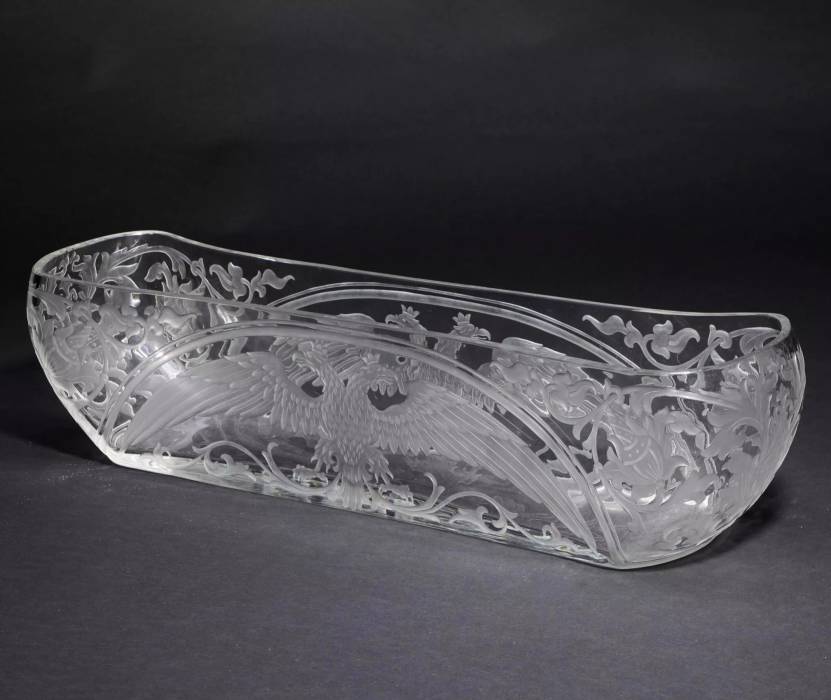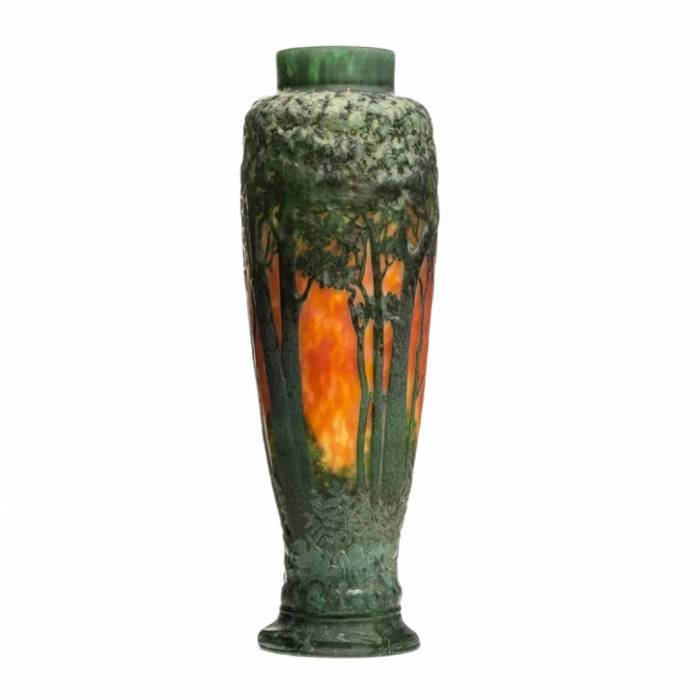The jardiniere is a unique example of decorative art of the early 20th century, made at the Imperial Glass Factory in St. Petersburg. The plant was founded in the 18th century and became famous for its high-quality products, which were in great demand both in Russia and abroad. The plant`s products decorated the interiors of imperial palaces and estates of the nobility, and served as gifts at diplomatic receptions and family celebrations. The product is distinguished by its massiveness and impressive dimensions: height 15.5 cm, length 69 cm, width 15.5 cm. These parameters indicate its purpose for large state rooms and spacious interiors. The rectangular shape with slightly concave sides, rounded corners and convex ends gives the product elegance and dynamism, creating an effect of lightness and sophistication. The decor deserves special attention: the main element of the decoration is the double-headed eagles depicted on the sides of the product. This symbol, which dates back to the times of the Byzantine Empire, was adopted by the Russian tsars and became an integral part of state symbols, which is the personification of the power and greatness of the Russian Empire. The eagles are made with exceptional detail, highlighting the skill of the artists and glass cutters of the Imperial Factory. Additional decor is made in the form of curls of flowers and foliage, creating a complex and exquisite ornament that harmoniously complements the main element of royal grandeur. The glass carvings are made in the Renaissance style, indicating a revival of interest in classical arts and crafts that characterized the late 19th and early 20th centuries. At the same time, the decor is inspired by Russian motifs of the 17th century, which include elements of floral patterns and ancient shapes of the product. This combination of styles indicates the desire of the craftsmen to preserve national traditions and cultural heritage. On the bottom of the jardiniere you can see the inscription H II 1912, made using the notch method. This marking indicates the year the product was created and whether it belonged to the products of the Imperial Glass Factory during the reign of Nicholas II. Analogues of this product can be found in museum collections around the world. For example, the collection of the Hillwood Museum in Washington contains vases with similar decoration (inv. No. 23.128.1 and 23.128.2). These vases, designed by Pyotr Ivanovich Krasnovsky and carved by carver Grigory Omrokov, confirm the high level of craftsmanship and artistic value of the products of the Imperial Glass Factory. The jardiniere is not only a valuable work of art, but also an important historical artifact. It reflects the high level of development of applied art in Russia at the beginning of the 20th century and the skill of artists and craftsmen who worked at the Imperial Glass Factory.Material: Colorless crystal, blown, cut, carved, engraved, polished.Provenance: Private collection.
Period:
Early 20th century
Country:
Russia, St. Petersburg
Founded in 1756 by decree of Empress Elizabeth Petrovna, the Imperial Glass Factory became one of Russias foremost centers of glassmaking. Throughout the 18th and 19th centuries, it supplied the court and state with premium-quality glass products, gaining international acclaim.By the late 19th and early 20th centuries, amid modernization and a revival of national traditions, the Factory’s products fused Renaissance stylistic elements with 17th-century Russian motifs.The factory’s masterpieces, known for their technical perfection, employed advanced methods of cutting, engraving, and polishing, achieving breathtaking light effects within the crystal’s depths. The double-headed eagle decoration linked such works with the imperial ceremonial style, serving as an emblem of state power.Imperial Glass Factory creations adorned the Winter Palace, the Alexander Palace in Tsarskoye Selo, and numerous imperial residences. Similar vases, designed by Pyotr Ivanovich Krasnovsky and carved by Grigory Omrokov, are preserved today in the Hillwood Estate museum in Washington (inv. nos. 23.128.1 and 23.128.2), demonstrating the artistic achievements of this period.This jardiniere is a precious testimony to the zenith of Russian decorative arts before the upheavals of World War I and the Russian Revolution, preserving the legacy of a vanished imperial world.
The condition report is provided for informational purposes only.
It is not comprehensive and may not reflect all defects, restorations, alterations, or adaptations, as Antiqon does not perform professional conservation-level assessments. The information is based on a qualified, yet subjective, evaluation by our specialists.Before purchasing, we recommend consultation with an independent expert.Please also consult our Terms and conditions and Glossary A-Z, which contain important information on lot characteristics and sale conditions.









































